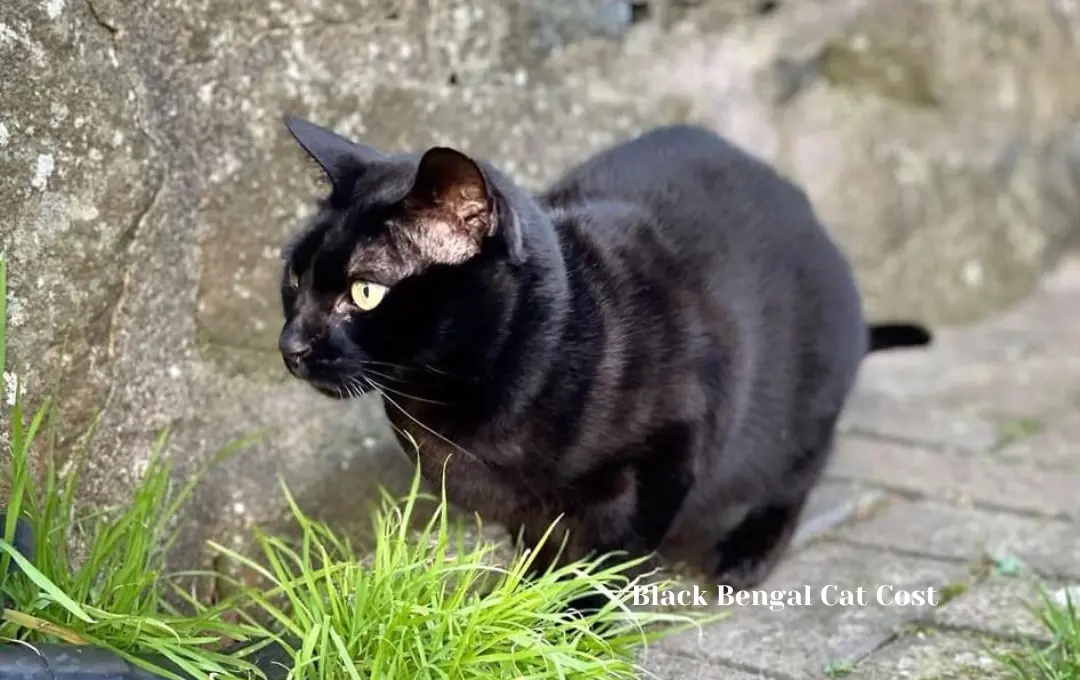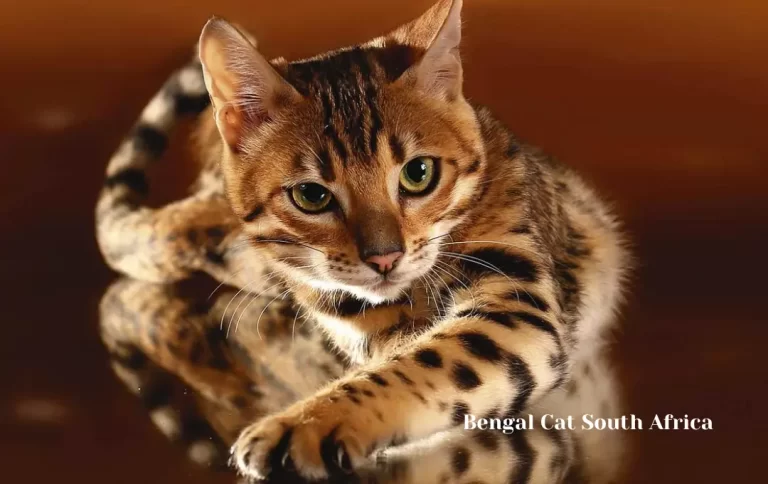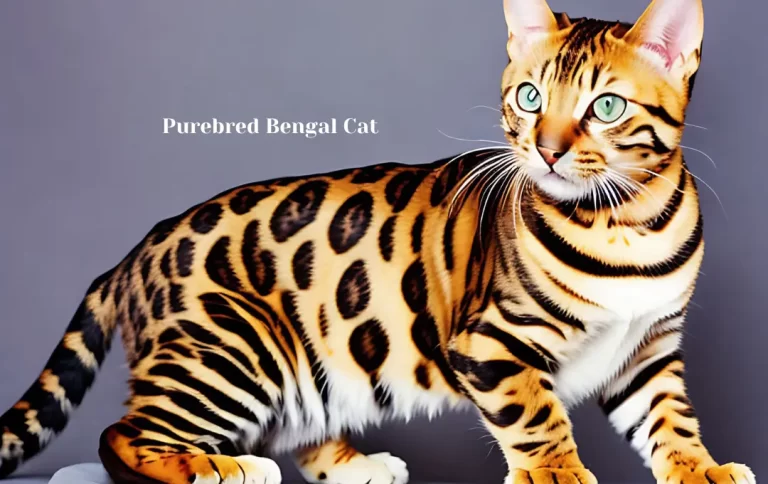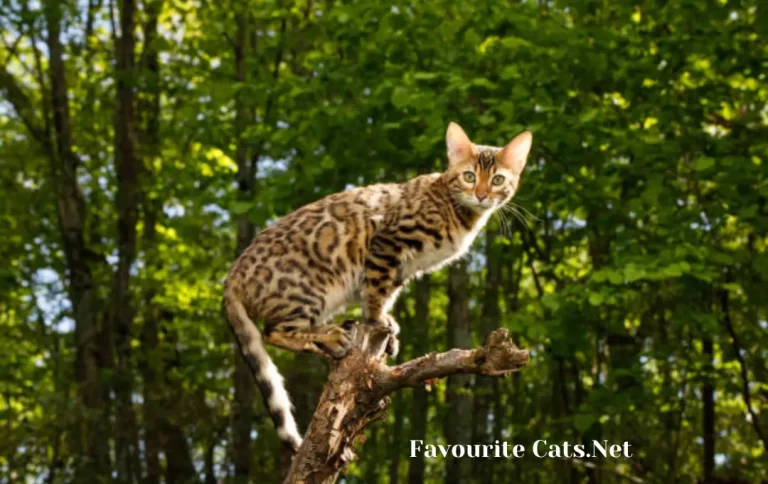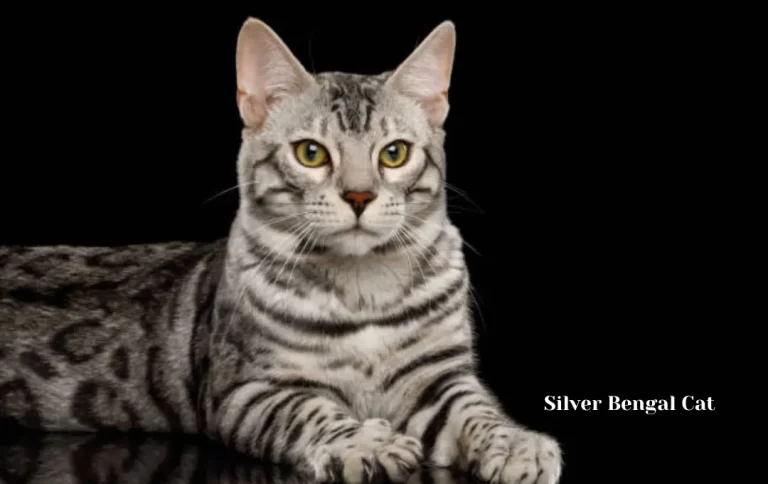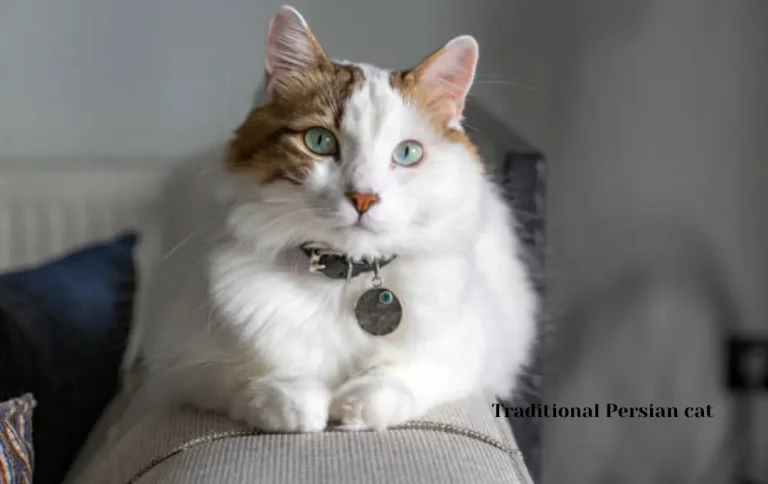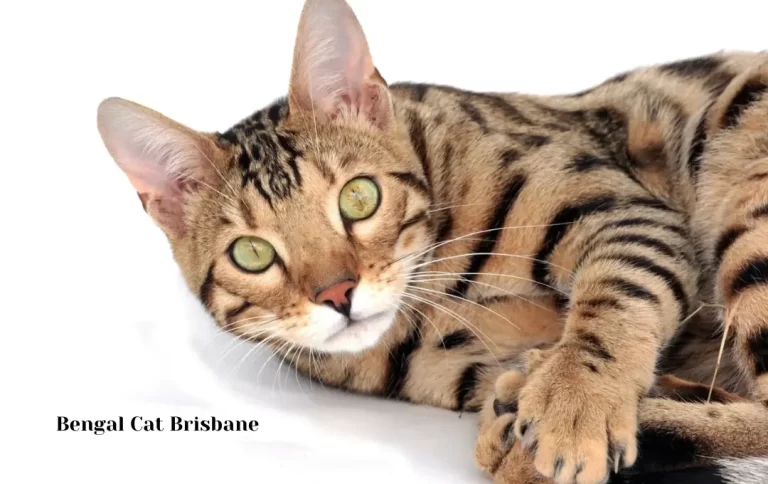Reasonable Black Bengal Cat Cost | How Much Does a Bengal Cat Cost? 2023 Price Guide
Understanding the cost of acquiring and caring for a Black Bengal Cat is essential to ensure that your dream of having this captivating feline companion becomes a reality. In this guide, we will delve into the intriguing world of Black Bengal Cat costs. From the initial price tag to ongoing expenses like food, grooming, and veterinary care, we will explore the financial aspects of welcoming a Black Bengal Cat into your home.
Whether you’re a seasoned Bengal cat enthusiast or a curious newcomer, this comprehensive overview will help you make an informed decision and prepare for the investment of love and resources that comes with bringing a Black Bengal Cat into your life.
Physical Characteristics
Black Bengal Cats are renowned for their striking appearance, characterized by a captivating combination of sleekness and elegance. These cats are known for their distinctive physical characteristics, which set them apart from other breeds. Let’s take a closer look at what makes the physical appearance of Black Bengal Cats so remarkable.
Coat Color and Pattern
The most defining feature of Black Bengal Cats is, of course, their ebony coat color. Unlike other Bengal cats, which may exhibit various coat colors and patterns, Black Bengals are primarily black or very dark brown. The rich, velvety black coat serves as a stunning canvas for their distinctive rosette patterns, which are reminiscent of the spots found on wild leopards.
Body Structure
Black Bengal Cats have a graceful and athletic build that is both powerful and agile. Their bodies are medium to large in size, with well-developed muscles that reflect their natural hunting prowess. These cats have a long, slender neck, a broad chest, and a sleek, tapered tail. Their legs are proportionate and end in small, rounded paws.
Eye Color
One of the most captivating features of Black Bengal Cats is their mesmerizing eye color. Most Black Bengals have striking emerald-green eyes that provide a stark and stunning contrast to their dark coats. The depth and intensity of their eye color contribute to their overall allure and charm.
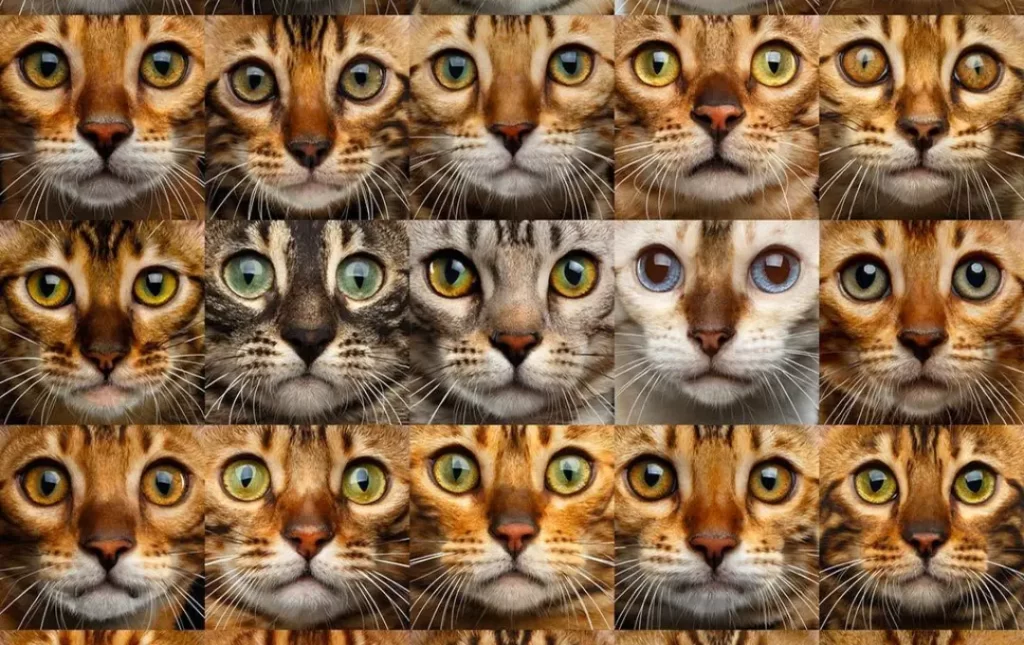
Rosette Patterns
While Black Bengal Cats are predominantly black, their rosette patterns add a layer of complexity and intrigue to their appearance. These rosettes can vary in size and shape, with some resembling donut-like spots and others forming more open, irregular shapes. The rosettes are typically outlined in a darker shade of black or brown, creating a unique and mesmerizing look.
Whisker Pads and Chin Spots
Black Bengal Cats often have pronounced whisker pads, which are small clusters of spots around their whisker bases. Additionally, some Black Bengals may exhibit small, distinctive chin spots, adding to the individuality of their appearance.
In summary, the physical characteristics of Black Bengal Cats are a testament to the breed’s unique beauty and charm. Their ebony coats, captivating rosette patterns, and enchanting emerald eyes make them a truly exceptional and unforgettable breed, both in appearance and personality.
Personality and Behavior
The Enigmatic Personality of Black Bengal Cats
Black Bengal Cats are more than just a stunning breed with captivating looks; they are known for their dynamic and engaging personalities. Their behavior combines elements of wild ancestry with domesticated charm, creating a unique and fascinating pet experience. Let’s delve into the intriguing world of Black Bengal Cat personalities and behavior traits.
Temperament
Black Bengal Cats are often described as spirited and active. They are known for their high energy levels and love for playtime. These cats are not content with lounging around all day; they crave mental and physical stimulation. Their curiosity knows no bounds, and they are quick to explore their surroundings with a keen interest in every nook and cranny.
Social Behavior
While Black Bengal Cats are highly independent, they are also social creatures that form strong bonds with their human companions. They enjoy being a part of the family and thrive on interaction and attention. Black Bengals are known for their vocal nature and may engage in conversations with their owners, expressing their needs and desires through a range of expressive meows and purrs.
Playfulness and Energy

What is the feeling of playfulness?
So, feeling playful. What’s that like? APA Dictionary defines playfulness as: “n. the tendency to see the light or bright side of life, to joke with others, and not to take matters too seriously.
Black Bengal Cats have a playful and adventurous spirit. They love toys, especially those that challenge their agility and intelligence. Puzzle toys, feather wands, and interactive games are ideal for keeping them mentally and physically engaged. Their energy levels can be compared to those of kittens, even into adulthood, so providing them with ample playtime and opportunities to burn off energy is essential.
Affection and Affinity for Water
Surprisingly, many Black Bengal Cats have a fascination with water. This is a breed known to enjoy playing with dripping faucets, dipping their paws into water dishes, and sometimes even joining their humans in the shower or bath. Their affinity for water adds an extra layer of intrigue to their personalities.
Territorial Instincts
Black Bengal Cats may exhibit strong territorial instincts, which can lead to a desire to mark their territory. This behavior is a throwback to their wild ancestors, who needed to establish and defend their hunting grounds. Providing them with designated scratching posts and areas to call their own can help manage this instinct.
Intelligence and Training
Black Bengal Cats are highly intelligent and can quickly learn tricks and commands. Positive reinforcement training methods work exceptionally well with this breed. Teaching them tricks and providing mental stimulation through training sessions can help channel their energy and intelligence in a productive way.
In conclusion, Black Bengal Cats are known for their lively, engaging personalities. Their active and curious nature makes them delightful companions for individuals and families who are willing to provide them with the mental and physical stimulation they crave.
Black Bengal Cat cost
The cost of a Bengal Cat can vary significantly depending on several factors, including the cat’s age, pedigree, coat quality, and breeder reputation. Here are some general price ranges to give you an idea of what to expect when looking to purchase a Bengal Cat:
Pet Quality Bengals: Bengal Cats that are sold as pets, rather than for breeding or show, are typically less expensive. The price for a pet-quality Bengal can range from $800 to $2,500 or more, depending on the breeder and region.
Breeder/Show Quality Bengals: If you are looking for a Bengal Cat with exceptional lineage and show potential, the cost can be higher. Breeder/show-quality Bengals can range from $2,500 to $7,000 or more, with some top-quality show cats commanding even higher prices.
Rescue/Adoption: Adopting a Bengal Cat from a rescue organization or shelter is often more affordable than purchasing one from a breeder. Adoption fees typically range from $100 to $500, depending on the organization and the age and health of the cat.
Additional Costs: Keep in mind that the initial purchase price is just one part of the cost of owning a Bengal Cat. You’ll also need to budget for ongoing expenses like food, litter, grooming supplies, toys, regular veterinary care, and potential emergencies.
Health and Wellness
Keeping Your Bengal Cat Healthy and Happy
Ensuring the health and wellness of your Bengal Cat is a top priority for any responsible pet owner. While Bengal Cats are generally hardy and robust, they can be prone to certain health issues. Regular veterinary care, a healthy lifestyle, and early detection of potential problems are key to keeping your Bengal in optimal condition.
Common Health Issues
Bengal Cats may be predisposed to specific health concerns, including:
Gastrointestinal Issues: Bengals can be sensitive to dietary changes, so maintaining a consistent diet is crucial to prevent digestive problems.
Heart Disease: Hypertrophic cardiomyopathy (HCM) is a genetic condition that can affect Bengal Cats. Regular cardiac screenings by a veterinarian are recommended.
Urinary Tract Issues: Some Bengals are prone to urinary tract problems, such as crystals or infections. Providing plenty of fresh water and a high-quality diet can help prevent these issues.
Allergies: Bengals may have food allergies or environmental allergies. Consult your vet if you notice signs like itching, hair loss, or digestive problems.
Hip Dysplasia: While less common in Bengals, this genetic condition can still occur. Responsible breeding practices can help reduce the risk.
Regular Veterinary Care
Vaccinations: Keep your Bengal Cat up-to-date on vaccinations as recommended by your veterinarian to protect against common feline diseases.
Annual Check-Ups: Schedule annual wellness exams to monitor your cat’s overall health and catch any potential issues early.
Parasite Control: Administer flea, tick, and worm preventatives as recommended by your vet to keep your Bengal free from external and internal parasites.
Diet and Nutrition
High-Quality Diet: Feed your Bengal a balanced diet with high-quality cat food that meets their nutritional needs. Consult your vet for dietary recommendations.
Hydration: Ensure your cat has access to clean, fresh water at all times to prevent urinary tract issues.
Dental Care
Oral Health: Dental problems can be a concern for Bengal Cats. Brush their teeth regularly or provide dental treats and toys to help maintain dental hygiene.
Exercise and Mental Stimulation
Active Lifestyle: Regular exercise and playtime are essential for Bengal Cats to keep them physically and mentally stimulated. Interactive toys and play sessions are crucial.
Spaying or Neutering
Population Control: Spaying or neutering your Bengal Cat is recommended unless you plan to breed them responsibly. This not only helps control the feline population but can also prevent certain health issues and undesirable behaviors.
Environmental Considerations
Safe Environment: Ensure your home is free from hazards and toxic substances that could harm your Bengal Cat.
Stress Management: Bengals can be sensitive to stress. Provide a calm and secure environment to minimize anxiety.
Breeding and Reproduction
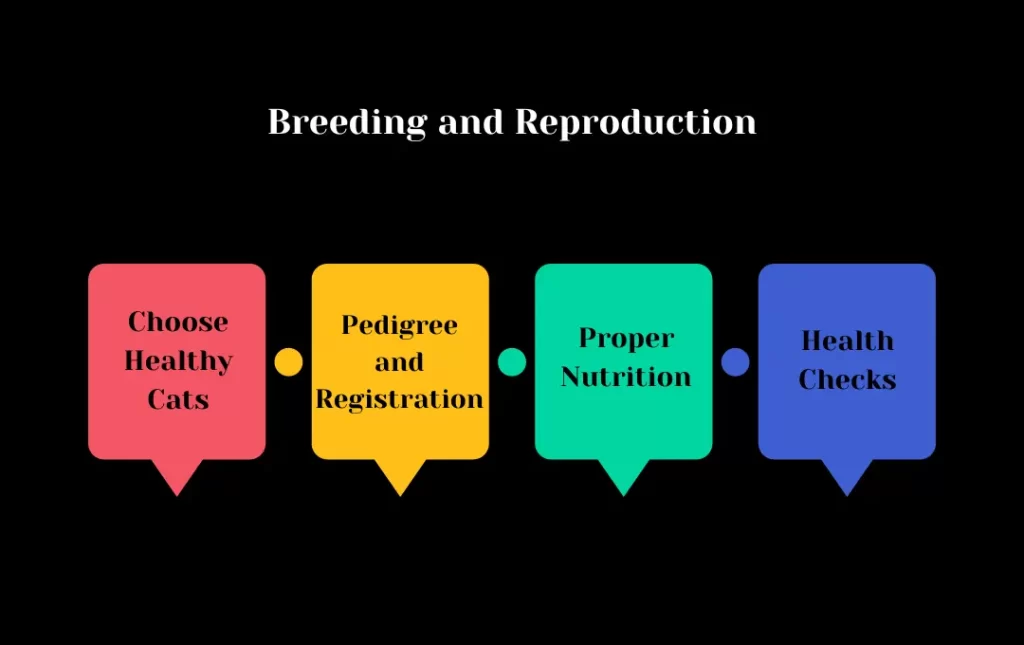
Breeding Bengal Cats is a responsible and complex endeavor that requires careful planning, knowledge, and dedication. For those interested in becoming Bengal breeders or for those considering adding a Bengal kitten to their family, it’s essential to understand the breeding process, from selecting breeding pairs to caring for pregnant cats and kittens.
Selecting Breeding Pairs
Health and Genetics: Before breeding, ensure that both the male and female Bengal Cats are in excellent health. They should be screened for common genetic issues like hypertrophic cardiomyopathy (HCM) and hip dysplasia.
Temperament: Choose cats with compatible temperaments, as this can affect the behavior and disposition of their offspring.
Appearance: Breeding Bengal Cats should meet the breed standard in terms of coat color, pattern, and other physical characteristics.
Reproductive Timing
Estrus Cycle: Female Bengal Cats typically come into estrus (heat) every two to three weeks during the breeding season, which is typically from January to August.
Mating: Allow the male and female to mate during the female’s estrus cycle. Mating may need to occur multiple times over a few days to increase the chances of successful fertilization.
Pregnancy and Kitten Care
Gestation: Bengal Cats have a gestation period of approximately 63 to 67 days. During pregnancy, the female should receive proper nutrition and care.
Kitten Birth: Prepare a comfortable and quiet space for the pregnant cat to give birth. Be on hand to provide assistance if needed, but most cats handle birthing on their own.
Kitten Care: After birth, ensure the mother cat is nursing and caring for her kittens. Monitor the kittens’ health, growth, and weight gain.
Responsible Breeding Practices
Ethical Considerations: Responsible breeders prioritize the health and well-being of their cats over financial gain. They are committed to producing healthy, well-socialized kittens.
Legal and Ethical Standards: Familiarize yourself with local and international laws and ethical standards governing animal breeding and selling.
Breeding Ethics: Responsible breeders should not engage in excessive or unethical breeding practices that could harm the cats or contribute to overpopulation.
Registration and Documentation: Keep accurate records of pedigrees, health certifications, and other documentation related to your breeding program.
Finding Homes for Kittens
Screening Potential Owners: Ensure that prospective kitten buyers are prepared to care for a Bengal Cat and provide a safe and loving home.
Health Guarantees: Offer health guarantees and information on vaccinations and care to the new owners.
Spaying and Neutering: Encourage spaying and neutering of Bengal Cats not intended for breeding to help control the population.
Black Bengal Cat Variations
While Black Bengal Cats are known for their striking ebony coats, there are several variations within this breed that offer different coat colors and patterns. These variations add a layer of intrigue to the already captivating world of Bengal Cats. Let’s explore some of these unique variations:
Melanistic Bengals
Melanistic Bengal Cats are often referred to as “panthers of the cat world.” These cats have an excess of dark pigment, resulting in a nearly solid black coat. Unlike typical Black Bengals, melanistic Bengals may not display distinct rosette patterns or spots, making their coat appear sleek and uniformly dark. Their striking appearance can be quite reminiscent of their wild ancestors.
Sepia and Mink Bengals
Sepia and Mink are variations that introduce different coat colors and patterns to Black Bengal Cats:
Sepia Bengals: Sepia Bengals have a lighter coat color compared to typical Black Bengals. Their coat may be dark brown or chocolate-colored with lighter brown spots or rosettes. This variation results from a combination of specific genetic factors that influence coat color.
Mink Bengals: Mink Bengals have a unique coat color that falls between the standard Black and Sepia Bengals. Their coat is a rich, warm brown with darker brown spots or rosettes. The Mink variation is a result of a distinct combination of genetic factors.
Charcoal Bengals
Charcoal Bengal Cats have a coat that features deeper and more pronounced patterns than typical Black Bengals. These patterns can appear as dark, almost black markings on a lighter background. Charcoal Bengals often have a more dramatic contrast between their spots or rosettes and their coat color, giving them an exotic and visually striking appearance.
Famous Black Bengal Cats
While Black Bengal Cats are known for their stunning appearance and unique variations, there aren’t many famous individual Black Bengal Cats that have gained widespread recognition or fame in the same way that some other cat breeds or specific cats have. Bengal Cats, in general, have gained popularity due to their distinctive appearance and active personalities. However, here are a few notable Black Bengal Cats that have made a mark in the Bengal Cat community:
Starbuck: Starbuck was a well-known Black Bengal Cat in the Bengal Cat breeding world. He gained recognition for his exceptional rosette pattern and rich ebony coat, contributing to the breed’s overall quality.
Panther: Panther was a striking melanistic Bengal Cat known for his sleek, all-black coat. He was often featured in photographs and videos showcasing the beauty of melanistic Bengals.
Midnight: Midnight was a beloved Black Bengal Cat who became an internet sensation due to her playful and affectionate nature. She gained a following on social media for her adorable antics and striking appearance.
It’s worth noting that while these individual cats may have gained some recognition within the Bengal Cat community, the breed as a whole is celebrated for its unique beauty and engaging personalities rather than the fame of individual cats. Many Bengal Cat enthusiasts and breeders are passionate about preserving the breed’s exceptional traits and promoting responsible breeding and ownership practices.
Adopting a Black Bengal Cat
Adopting a Black Bengal Cat can be a rewarding experience, but it’s important to approach the process with careful consideration and responsibility. Here are some steps to guide you in adopting a Black Bengal Cat:
Research the Breed:
Before adopting a Black Bengal Cat, familiarize yourself with the Bengal breed as a whole. Understand their unique characteristics, including their active nature, grooming needs, and potential health issues.
Consider Adoption Options:
Look for Black Bengal Cats in animal shelters, rescue organizations, or Bengal-specific rescue groups. Adopting from a shelter or rescue can provide a loving home to a cat in need.
Find a Reputable Breeder (if desired):
If you decide to go through a breeder, ensure they are reputable. Research their breeding practices, ask for references, and visit their facility if possible. Responsible breeders prioritize the health and well-being of their cats.
Prepare Your Home:
Bengal Cats are active and playful. Make sure your home is Bengal-friendly by providing ample space for them to roam, climb, and explore. Remove potential hazards and provide interactive toys for mental stimulation.
Budget for Expenses:
Owning a Bengal Cat comes with costs for food, litter, grooming supplies, veterinary care, and potential emergencies. Ensure you have a budget in place to meet these expenses.
Health Screening:
Whether adopting from a breeder or a rescue, make sure the cat has been screened for common Bengal Cat health issues like hypertrophic cardiomyopathy (HCM) and hip dysplasia.
Ask Questions:
When adopting from a breeder or rescue, ask questions about the cat’s history, behavior, and any known health issues. This information can help you make an informed decision.
Spaying/Neutering:
Ensure the Bengal Cat you adopt is spayed or neutered unless you are specifically adopting for breeding purposes. Responsible breeding practices are essential to avoid overpopulation.
Transition Period:
Be patient during the cat’s transition to your home. Provide a safe and quiet space for them to acclimate to their new environment gradually.
Regular Veterinary Care: – Once you’ve adopted a Black Bengal Cat, establish a relationship with a veterinarian who is familiar with the breed. Schedule regular check-ups and vaccinations.
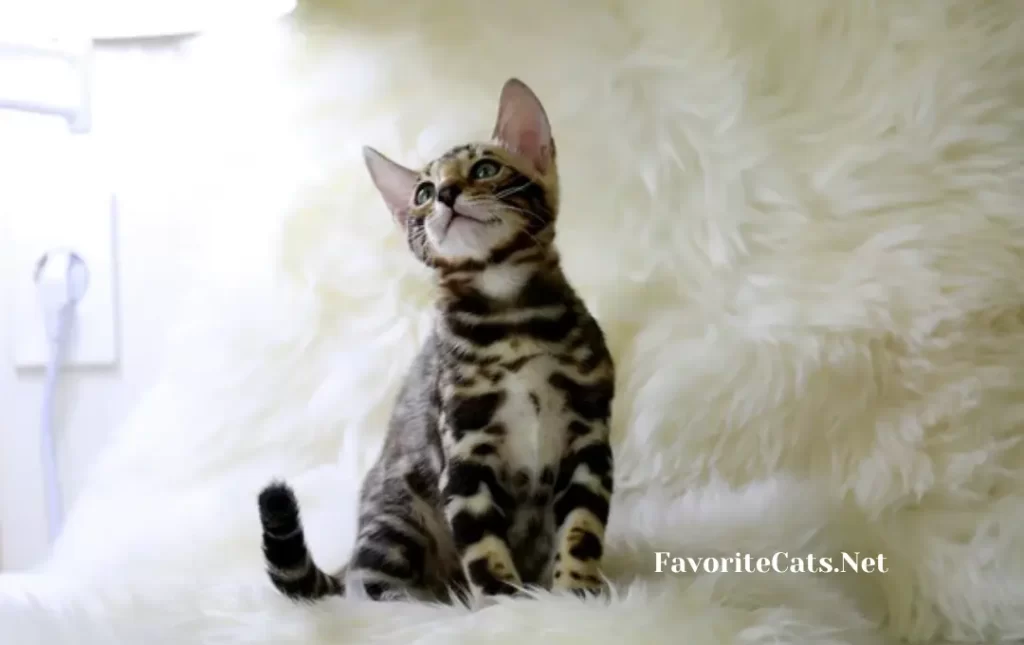
Socialization and Training: – Socialize and train your Bengal Cat from a young age. Use positive reinforcement methods to reinforce desired behaviors and prevent undesirable ones.
Love and Affection: – Give your Bengal Cat plenty of love, attention, and affection. Bengals are known for forming strong bonds with their owners and thrive on interaction.
Remember that adopting a Bengal Cat is a long-term commitment, and providing a loving and responsible home is essential for their well-being. Whether you choose to adopt from a shelter, rescue, or breeder, your Black Bengal Cat can become a cherished member of your family with the right care and attention.
frequently asked question
Conclusion
The journey to bring a Black Bengal Cat into your life is a captivating adventure filled with beauty, charm, and companionship. As we conclude our exploration of the costs associated with Black Bengal Cats, it becomes clear that while the financial commitment is important, the rewards are immeasurable.
Owning a Black Bengal Cat is not just about the initial purchase price; it’s a lifelong commitment to providing a loving and comfortable home for a remarkable feline companion. From the moment they grace your life with their elegant presence, these enigmatic cats become cherished members of your family, enriching your days with their playful antics, affectionate nature, and captivating beauty.

